Energy Consumption Optimization of a Fluid Bed Dryer in Pharmaceutical Manufacturing Using EDA (Exploratory Data Analysis)
Abstract
1. Introduction
- Firstly, due to the situation described above, and the high cost of the fluid bed dryer involved in the drug production process, it is common practice to try to maximize the useful life of these fluid bed dryers. Thus, in particular, legacy fluid bed dryers (more than 15 years old) are not equipped with the latest sensors.
- Secondly, in the pre-heating process, there is a significant variability of time that depends on when the operator has started and finished the heating process. These operations are executed manually by the operators, as the fluid bed dryer is an old machine, and it is not equipped with sensors that detect when it is the optimal time to end the preheating process. On the one hand, there are operators who keep the fluid bed dryer warming up for approximately 45 min, whereas other operators keep the fluid bed dryer warming for up to 115 min. Although this scenario does not apply to all industrial plants, it might apply to several plants.
- Thirdly, at first glance it seems that the process is simple, and the formula that describes it is, basically, “the outlet temperature minus the inlet temperature” which approaches a constant value. However, in reality, it is a process with a complex non-linear behavior where the required temperature and therefore the time varies depending on different parameters such as the batch, the quantity, the mixture, and so on.
2. Related Work
3. Fluid Bed Dryer
4. Data Capture and Pre-Processing
4.1. Data Capture
4.2. Data Pre-Processing
5. Experiment Design
- Fan motor: the signal shows when the fluid bed dryer is on or off.
- Air flow: the signal indicates the air flow (quantity in m3/h) that enters the fluid bed dryer. This is configured by the fluid bed dryer operator.
- Inlet air temperature: the signal indicates the temperature at which the air enters the fluid bed dryer and is also set by the operator at the beginning of the process.
- Outlet air temperature: the signal indicates the temperature at which the air exits the fluid bed dryer.
- Define a matrix D [m, n]
- Assign data extracted from SCADA to D
- Upload D in the cloud environment (Azure)
- Eliminate values with variability equal to zero in D
- Perform data exploration on D
- Select key variables D~( ~)
- Select key rows D~ ~ ( )
- Perform data exploration on D~ ~ for PS
- Establish trends over time for t (D~ ~, PS)
- Establish trends over time for (D~ ~, PS)
6. Data Exploration
6.1. Data Exploration to Identify Trends and System Behavior
6.2. Verification of the Hypothesis with Historical Data from Production Batches
7. Conclusions and Future Work
Author Contributions
Funding
Institutional Review Board Statement
Informed Consent Statement
Data Availability Statement
Conflicts of Interest
References
- Herwig, C.; Wolbeling, C.; Zimmer, T. A holistic approach to production control: From industry 4.0 to pharma 4.0. Pharm. Eng. 2017, 37, 44–49. [Google Scholar]
- Chi, H.M.; Moskowitz, H.; Ersoy, O.K.; Altinkemer, K.; Gavin, P.F.; Huff, B.E.; Olsen, B.A. Machine learning and genetic algorithms in pharmaceutical development and manufacturing processes. Decis. Support Syst. 2009, 48, 69–80. [Google Scholar] [CrossRef]
- Haron, N.S.; Zakaria, J.H.; Batcha, M.F.M. Recent advances in fluidized bed drying. IOP Conf. Ser. Mater. Sci. Eng. 2017, 243, 012038. [Google Scholar] [CrossRef]
- Destro, F.; Barolo, M.; Nagy, Z.K. Quality-by-control of intensified continuous filtration-drying of active pharmaceutical ingredients. AIChE J. 2023, 69, e17926. [Google Scholar] [CrossRef]
- Zammouri, A.; Mihoubi, N.B.; Kechaou, N. A performance analysis of batch fluidized bed drying of two pharmaceutical powders by desirability approach. Dry. Technol. 2022, 40, 1210–1231. [Google Scholar] [CrossRef]
- Roseberry, M.O.; Gagnon, F.; Desbiens, A.; Bouchard, J.; Lapointe-Garant, P.P. Monitoring the moisture content in pharmaceutical batch fluidized bed dryers using observer-based soft sensors. IFAC-PapersOnLine 2020, 53, 12056–12061. [Google Scholar] [CrossRef]
- Peterson, J.J.; Snee, R.D.; McAllister, P.R.; Schoeld, T.L.; Carella, A.J. Statistics in pharmaceutical development and manufacturing. J. Qual. Technol. 2009, 41, 111–134. [Google Scholar] [CrossRef]
- Han, J.; Kamber, M.; Pei, J. Data mining: Concepts and techniques. In Data Management Systems; The Morgan Kaufmann Series; Gray, J., Ed.; Morgan Kaufmann Publishers: Burlington, MA, USA, 2006. [Google Scholar]
- Nettleton, D. Commercial Data Mining: Processing, Analysis and Modeling for Predictive Analytics Projects; Morgan Kaufmann: Burlington, MA, USA; Elsevier: Amsterdam, The Netherlands, 2014; ISBN 978-0-12-416602-8. [Google Scholar]
- Ping, L. Data Science for Modern Manufacturing; O’Reilly Media, Inc.: Sebastopol, CA, USA, 2016. [Google Scholar]
- Carthy, J. What Is Artificial Intelligence? Stanford University/Computer Science Department: Stanford, CA, USA, 2007. [Google Scholar]
- Gatley, D.P. Psychrometric chart celebrates 100th anniversary. Ashrae J. 2004, 46, 16. [Google Scholar]
- Schoen, C. A new empirical model of the temperature–humidity index. J. Appl. Meteorol. 2005, 44, 1413–1420. [Google Scholar] [CrossRef]
- Kayihan, F. Stochastic modeling of lumber drying in batch kilns. In Drying’85; Springer: Berlin/Heidelberg, Germany, 1985; pp. 368–375. [Google Scholar]
- Mittal, G.S.; Zhang, J. Artificial neural network-based psychrometric predictor. Biosyst. Eng. 2003, 85, 283–289. [Google Scholar] [CrossRef]
- Aparício, S.; Madalena, M. Modeling the Variation of Psychrometric Properties of Air in Depth. Master’s Thesis, Instituto Superior Técnico, Lisboa, Portugal, June 2019. [Google Scholar]
- Markarian, J. Modernizing pharma manufacturing. Pharm. Technol. 2018, 42, 20–25. [Google Scholar]
- Lourenço, V.; Lochmann, D.; Reich, G.; Menezes, J.; Herdling, T.; Schewitz, J. A quality by design study applied to an industrial pharmaceutical fluid bed granulation. Eur. J. Pharm. Biopharm. 2012, 81, 438–447. [Google Scholar] [CrossRef] [PubMed]
- Burggraeve, A.; Monteyne, T.; Vervaet, C.; Remon, J.P.; De Beer, T. Process analytical tools for monitoring, understanding, and control of pharmaceutical fluidized bed granulation: A review. Eur. J. Pharm. Biopharm. 2013, 83, 2–15. [Google Scholar] [CrossRef] [PubMed]
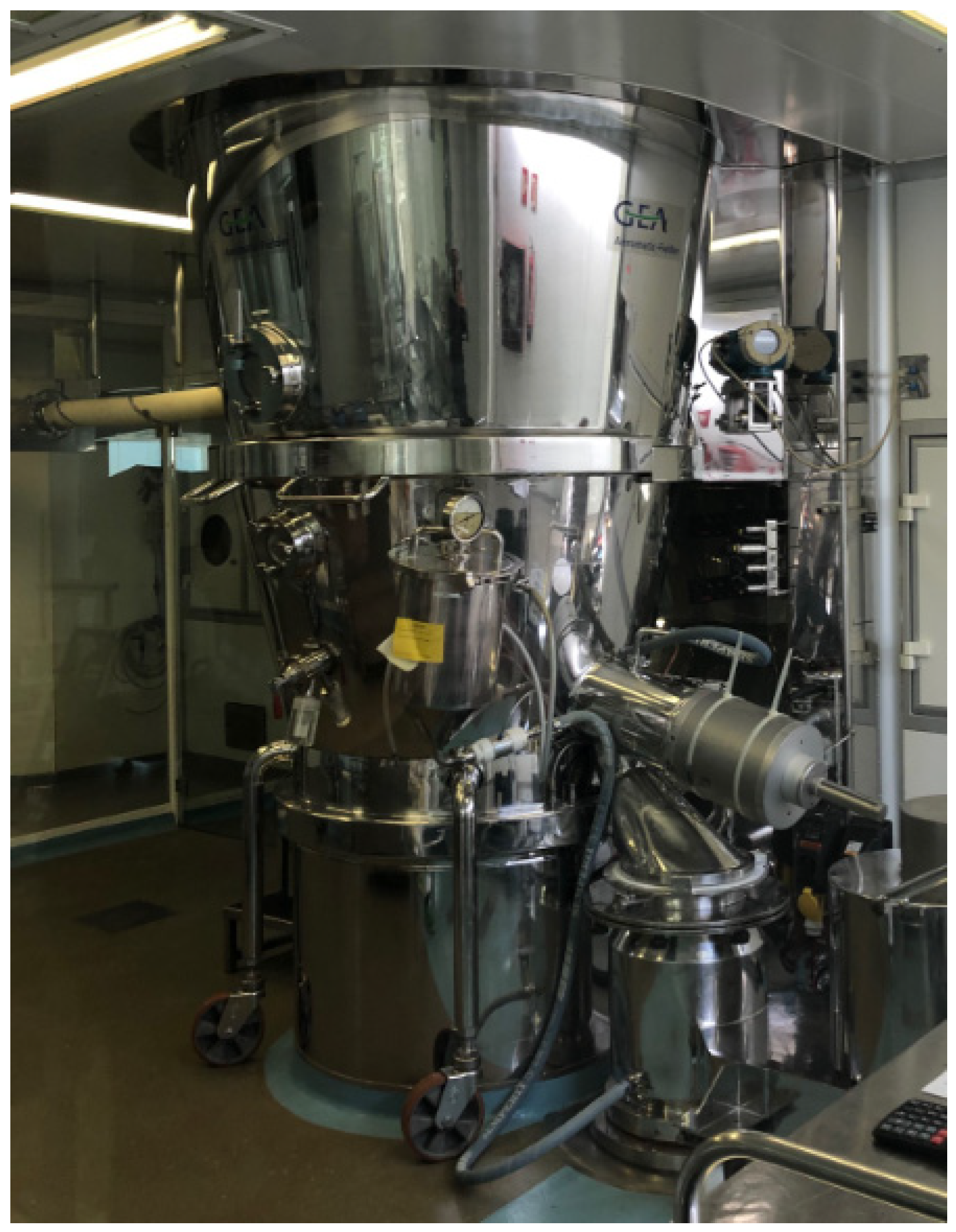

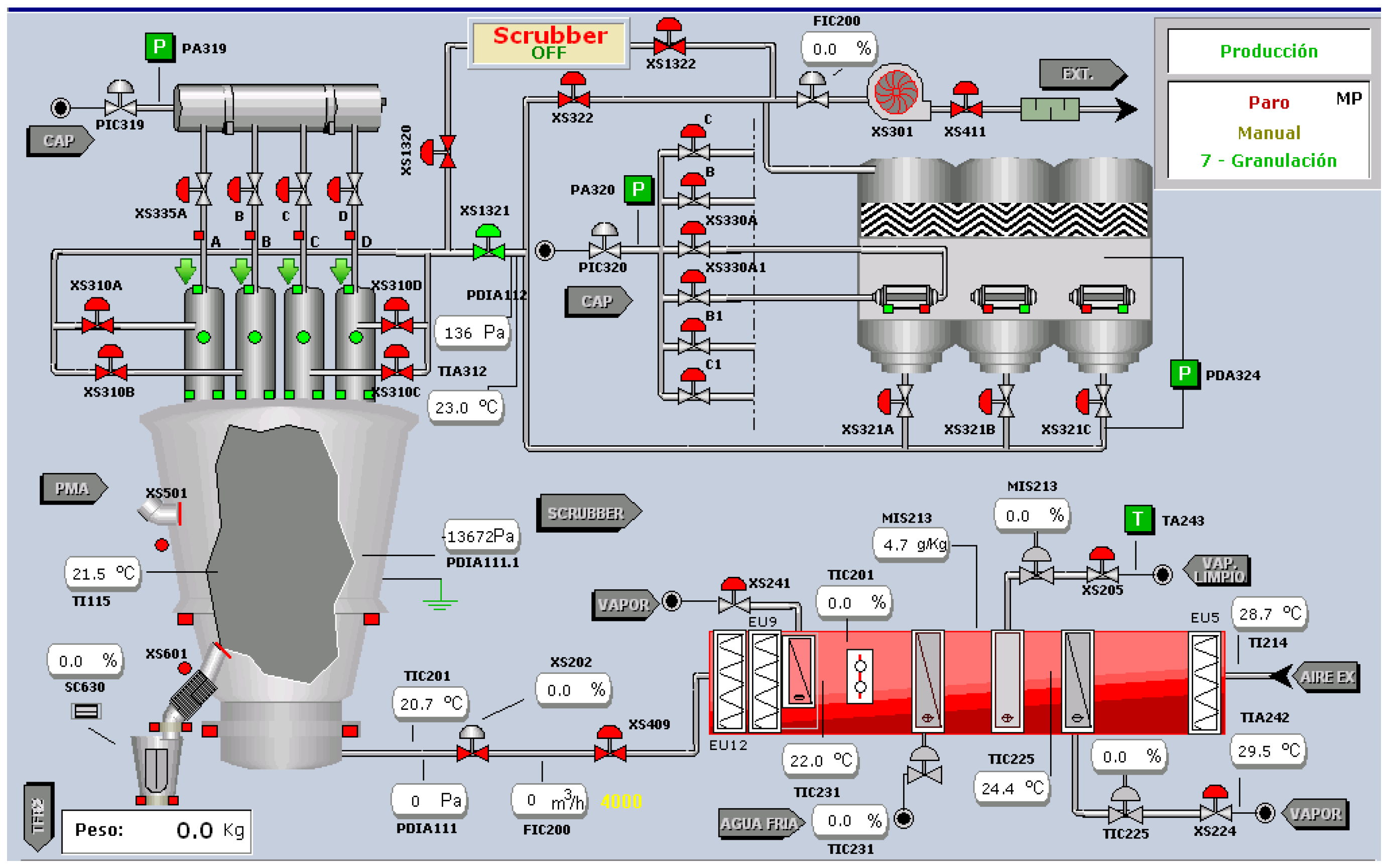
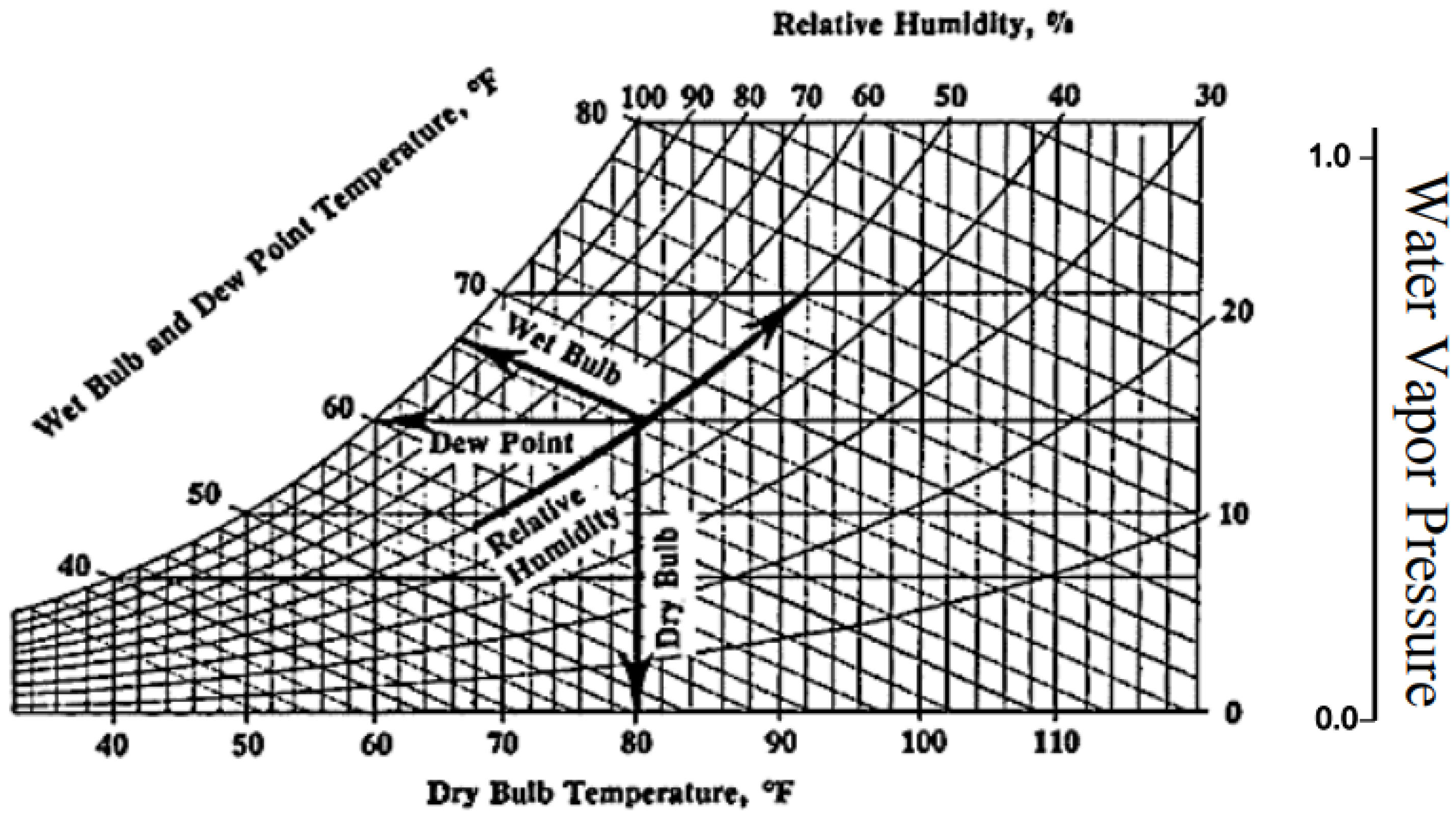
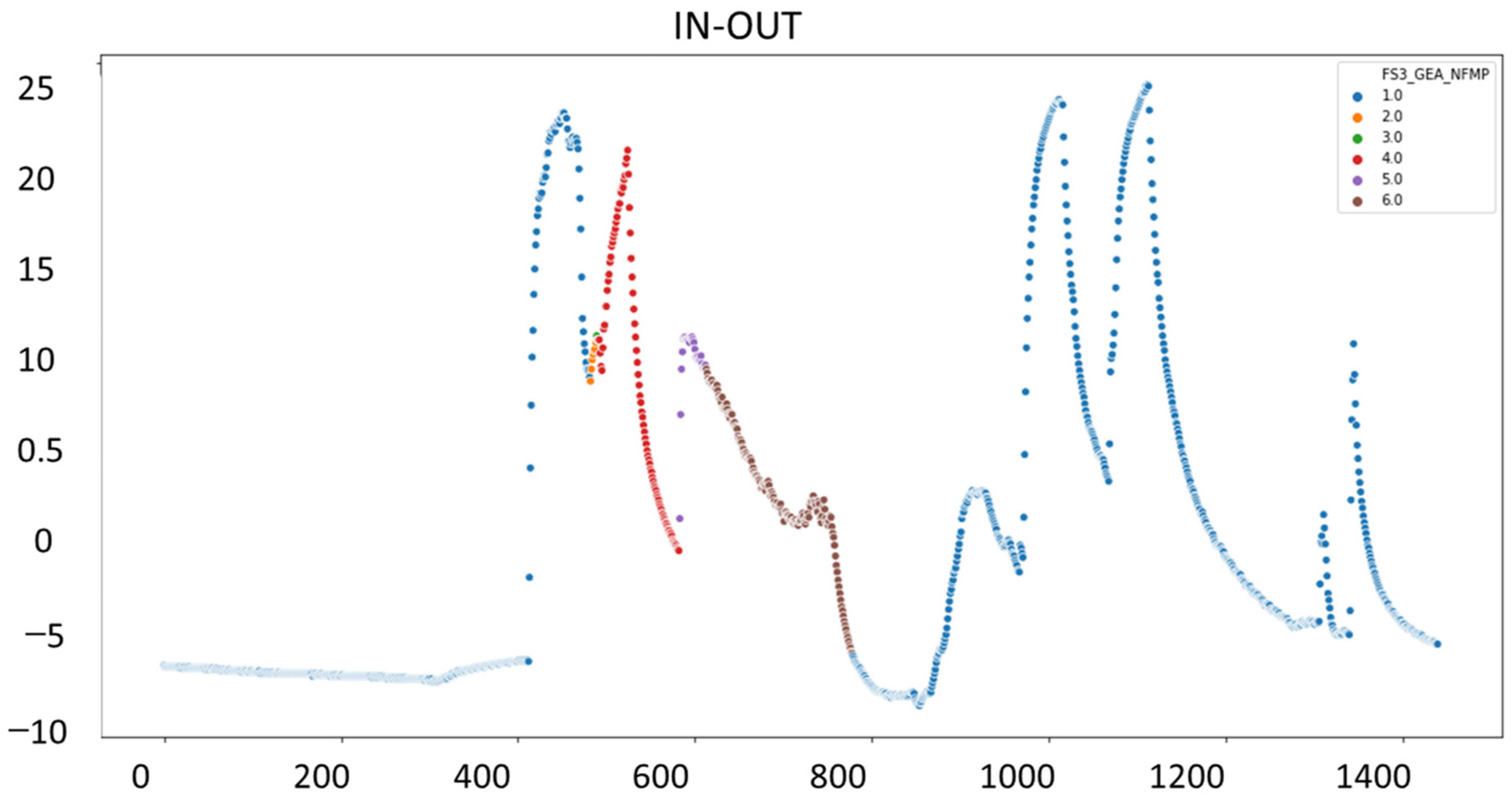
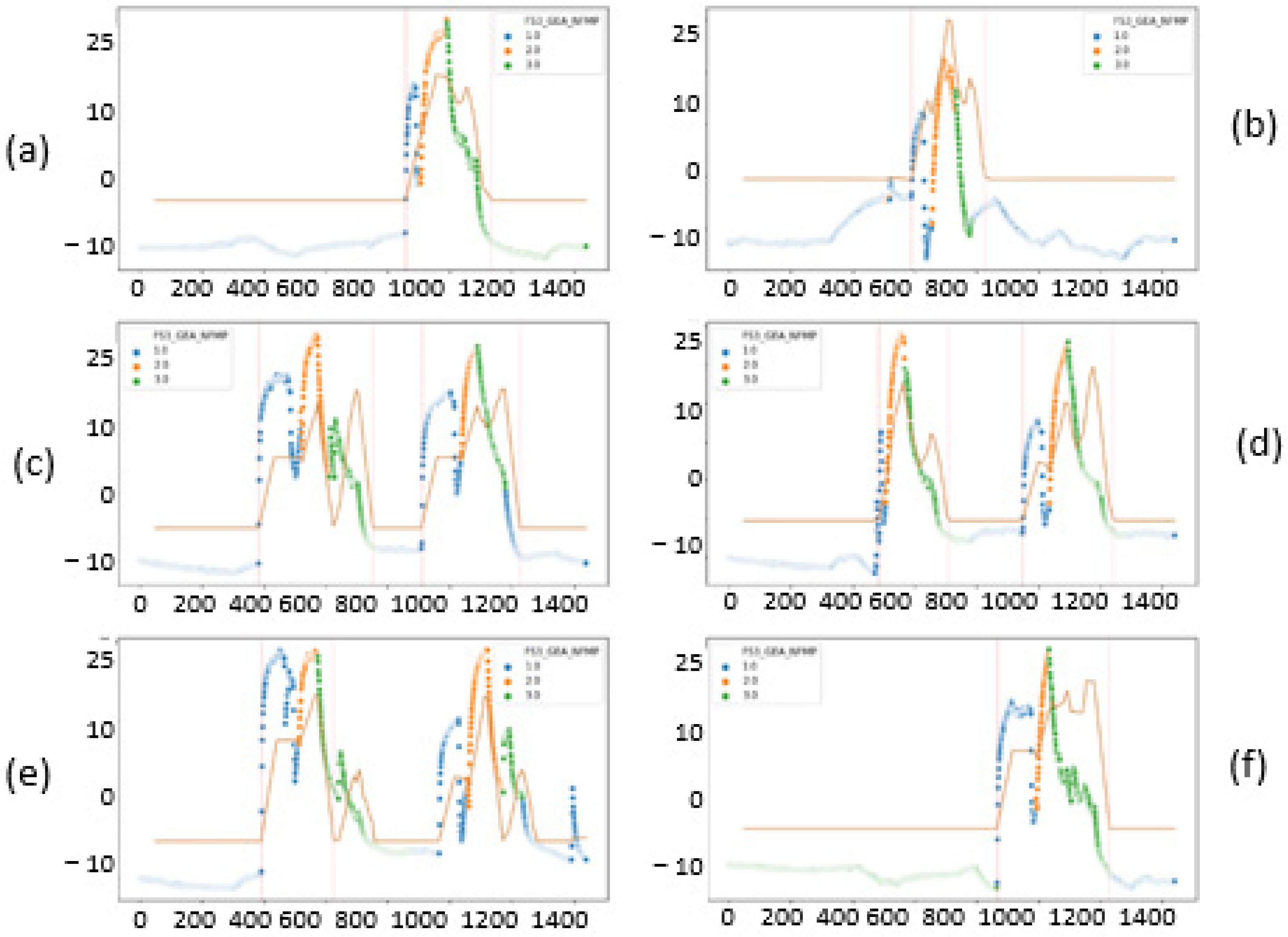

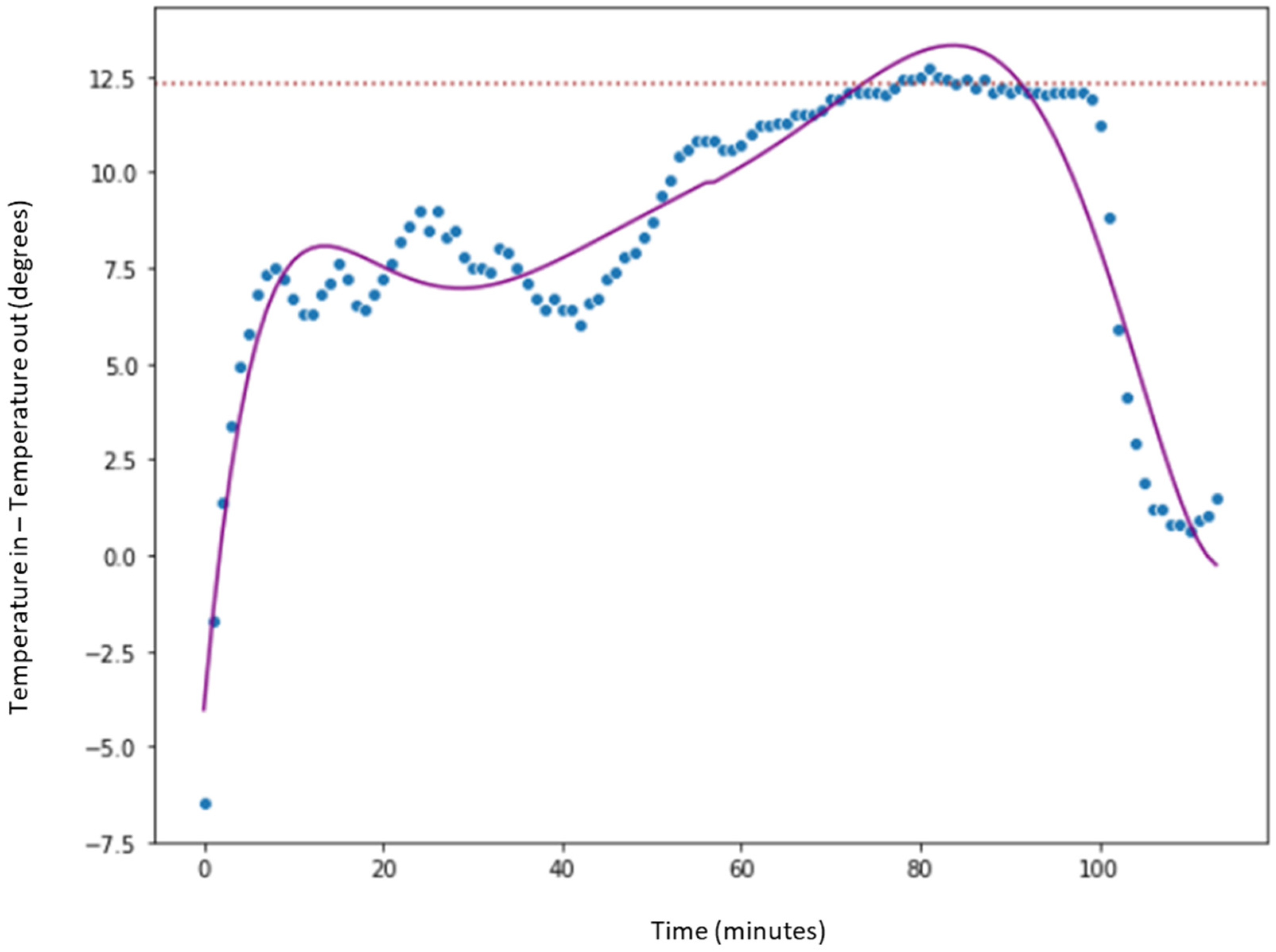
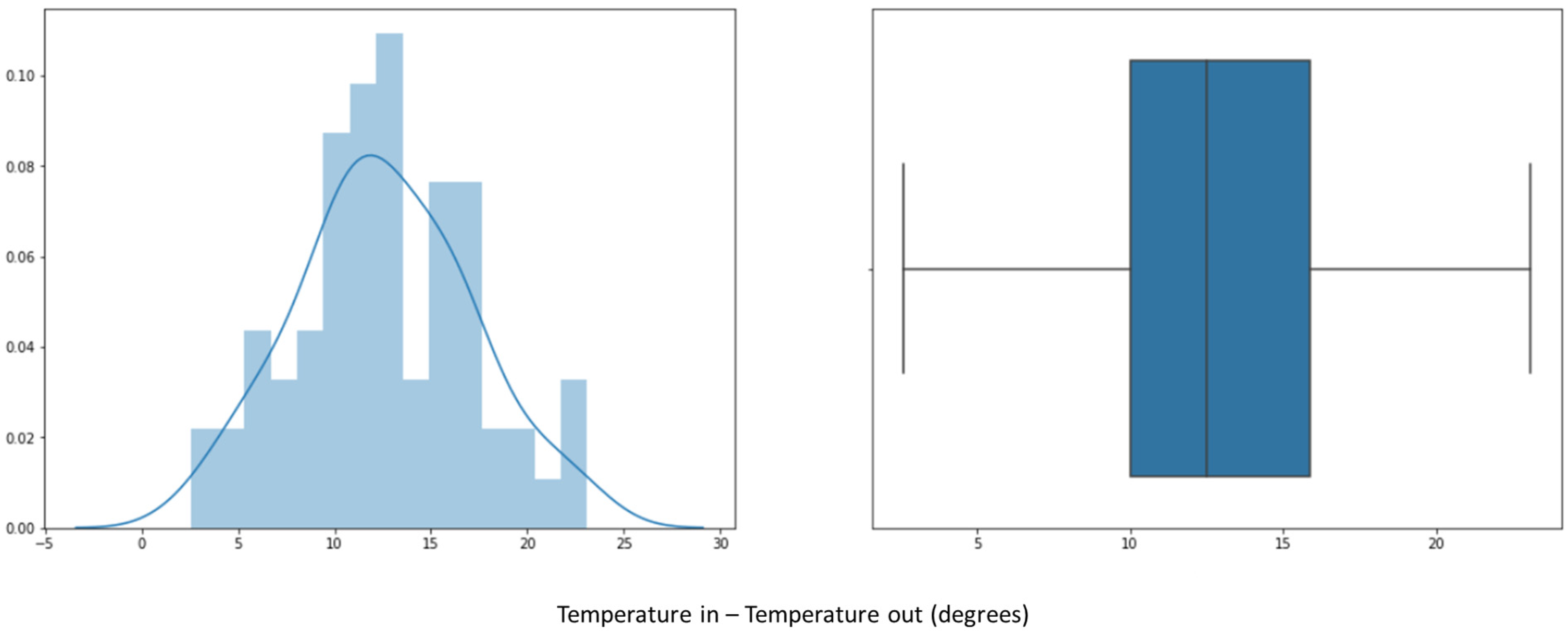
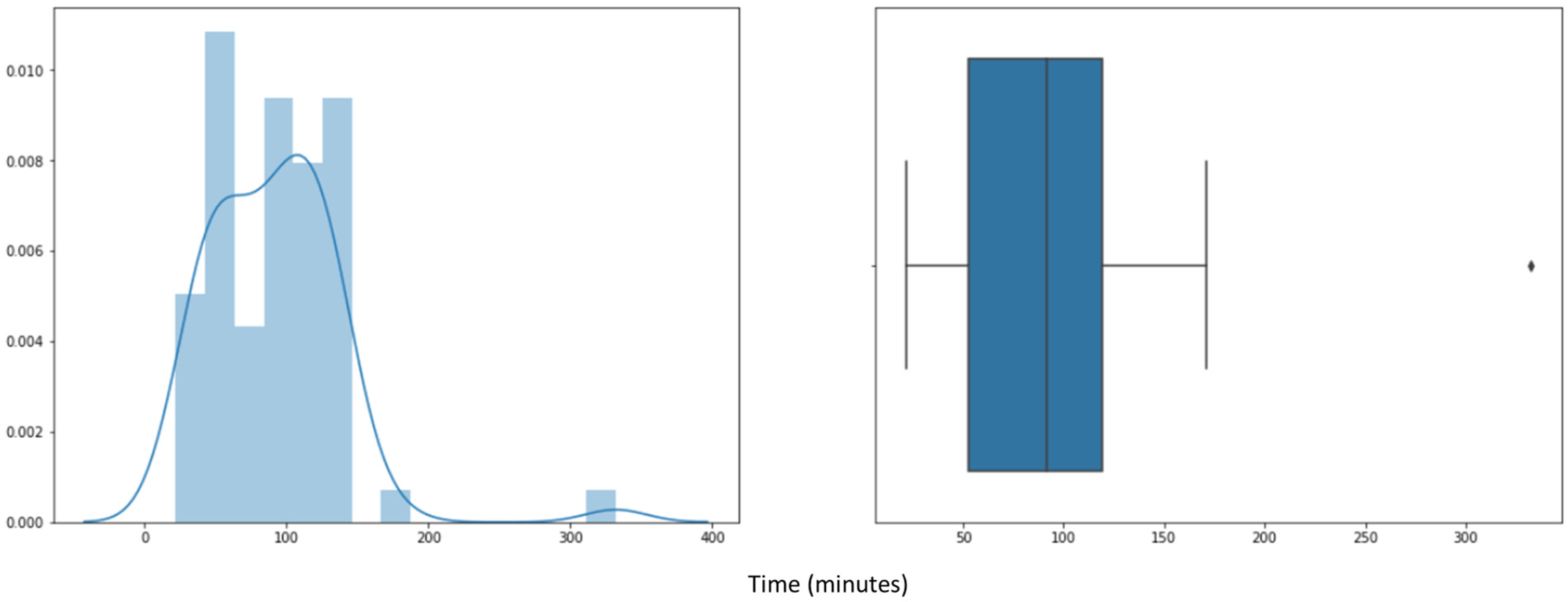
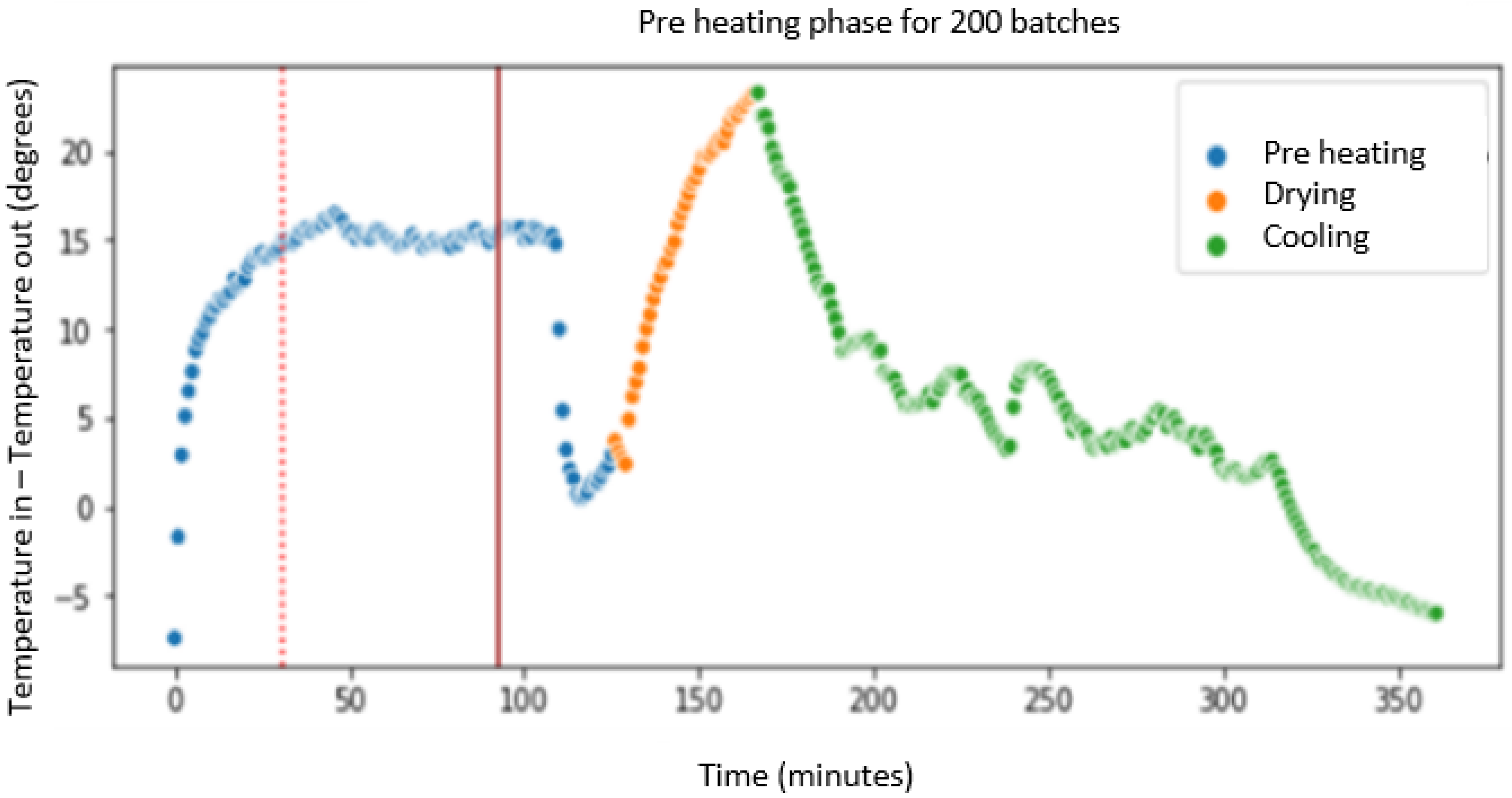
| Power Impeller [Kw] | Air Flow [m³/h] | Inlet Air Temperature [°C] | Outlet Air Temperature [°C] | |
|---|---|---|---|---|
| count | 1441.000000 | 1441.000000 | 1441.000000 | 1441.000000 |
| mean | 0.208952 | 1040.490632 | 23.295212 | 27.635045 |
| std | 0.944463 | 1366.454053 | 6.842901 | 7.364493 |
| min | 0.000000 | −58.000000 | 10.700000 | 22.100000 |
| 25% | 0.000000 | −55.000000 | 16.800000 | 22.900000 |
| 50% | 0.000000 | −55.000000 | 27.700000 | 23.400000 |
| 75% | 0.100000 | 2471.000000 | 29.500000 | 30.800000 |
| max | 11.600000 | 4042.000000 | 31.600000 | 47.900000 |
| Abbreviation | Sensor | Average | Max | Min |
|---|---|---|---|---|
| IF | Phase Indicator (1, 2, 3) | N/A | 3 | 1 |
| TAE | Temperature inlet Air | 23.2 | 52.8 | 0 |
| TAS | Temperature outlet Air | 27.6 | 47.9 | 0 |
| CAE | Inlet Air Flow | 1040 | 4042 | 0 |
| MOT | Fan Motor | 19.8 | 151 | 0 |
Disclaimer/Publisher’s Note: The statements, opinions and data contained in all publications are solely those of the individual author(s) and contributor(s) and not of MDPI and/or the editor(s). MDPI and/or the editor(s) disclaim responsibility for any injury to people or property resulting from any ideas, methods, instructions or products referred to in the content. |
© 2023 by the authors. Licensee MDPI, Basel, Switzerland. This article is an open access article distributed under the terms and conditions of the Creative Commons Attribution (CC BY) license (https://creativecommons.org/licenses/by/4.0/).
Share and Cite
Barriga, R.; Romero, M.; Hassan, H.; Nettleton, D.F. Energy Consumption Optimization of a Fluid Bed Dryer in Pharmaceutical Manufacturing Using EDA (Exploratory Data Analysis). Sensors 2023, 23, 3994. https://doi.org/10.3390/s23083994
Barriga R, Romero M, Hassan H, Nettleton DF. Energy Consumption Optimization of a Fluid Bed Dryer in Pharmaceutical Manufacturing Using EDA (Exploratory Data Analysis). Sensors. 2023; 23(8):3994. https://doi.org/10.3390/s23083994
Chicago/Turabian StyleBarriga, Roberto, Miquel Romero, Houcine Hassan, and David F. Nettleton. 2023. "Energy Consumption Optimization of a Fluid Bed Dryer in Pharmaceutical Manufacturing Using EDA (Exploratory Data Analysis)" Sensors 23, no. 8: 3994. https://doi.org/10.3390/s23083994
APA StyleBarriga, R., Romero, M., Hassan, H., & Nettleton, D. F. (2023). Energy Consumption Optimization of a Fluid Bed Dryer in Pharmaceutical Manufacturing Using EDA (Exploratory Data Analysis). Sensors, 23(8), 3994. https://doi.org/10.3390/s23083994








